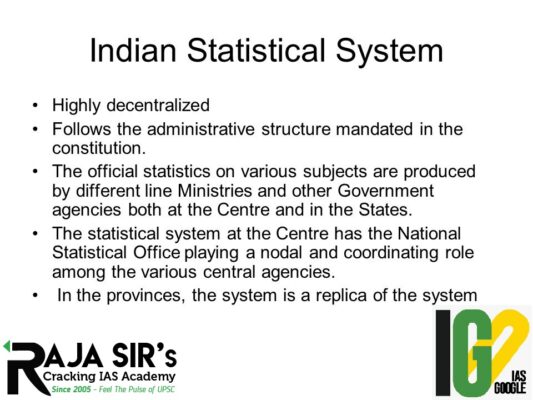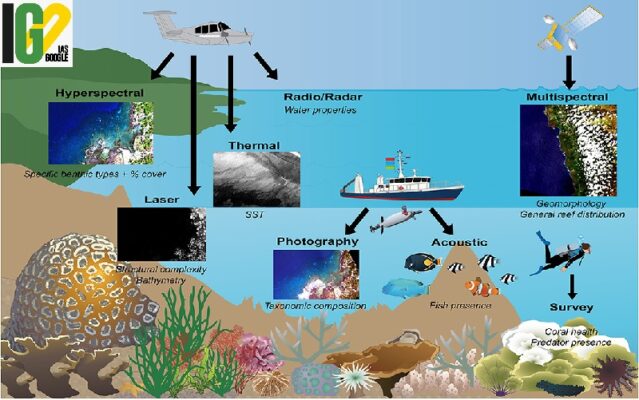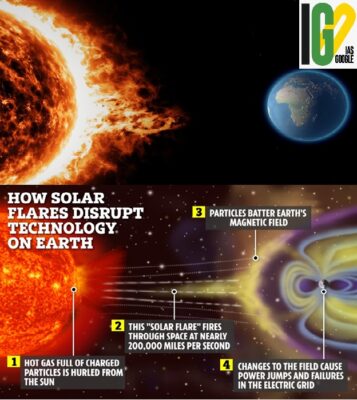- Home
- Prelims
- Mains
- Current Affairs
- Study Materials
- Test Series
 EDITORIALS & ARTICLES
EDITORIALS & ARTICLES
17th Sep 2021
CLEANLINESS SURVEY FOR VILLAGES ACROSS INDIA LAUNCHED
The Minister of State for Jal Shakti presided over the e-launch of Swachh Survekshan Grameen 2021 under Swachh Bharat Mission (Grameen) Phase -II.
Highlights of SSG:
 Highlights:
Highlights:



 9 September marked the observation of the International Day to Protect Education from Attack.
9 September marked the observation of the International Day to Protect Education from Attack.
- The Department of Drinking Water and Sanitation (DDWS) will undertake Swachh Survekshan Grameen (SSG) 2021.
- DDWS had commissioned SSG in 2018 and 2019.
- SSG 2021 will support acceleration of ODF Plus interventions, improving ODF Sustainability, and Solid and Liquid Waste Management activities across the villages in the country.
- SSG 2021 Protocol document; SSG 2021 Dashboard and the mobile App for Citizens feedback was released.
- The SSG 2021 mobile App will be available in major local Indian languages.
- In Phase 2 of Swachh Bharat Mission (Grameen), the SSG will focus on cleanliness, transparency, and people’s participation.
- The Surveskshan provides a great opportunity to give the necessary momentum to ODF Plus activities.
- It will engage districts and states in enhancing the sanitation, overall cleanliness, and waste management.
- The findings of the Survey will help in bridging the gaps by identifying challenges on ground and working with all states. The survey will be monitored with regular field visits.
- It will help to overcome the challenges occurred due to Covid pandemic and achieve ODF Plus status by the villages in near future.
- The second phase of Swachh Bharat Mission (Rural) was approved in February 2020, with an estimated central and state budget of Rs 52,497 crore.
- The second phase will be implemented between 2020-21 and 2024-25.
- It will focus on Open Defecation Free Plus (ODF Plus), which includes ODF sustainability and solid and liquid waste management (SLWM).
- The ODF Plus programme will converge with MGNREGA, especially for grey water management, and will complement the Jal Jeevan Mission.
- The programme will ensure that everyone uses a toilet.
- The fund sharing pattern between the Centre and States will be:
- 90:10 for North-Eastern States, Himalayan States and UT of J&K
- 60:40 for other States
- 100:0 for other Union Territories.
- Launched on 2nd October, 2014 to accelerate the efforts to achieve universal sanitation coverage and to focus on sanitation.
- To achieve a clean and open defecation free (ODF) India by October 2, 2019.
- Implementation: Ministry of Drinking Water and Sanitation.
- To improve the level of cleanliness in rural areas through Solid and Liquid Waste Management.
- Making Gram Panchayats Open Defecation Free (ODF), clean and sanitized.
- The rural sanitation Programme was started in October 2, 2014, when the sanitation coverage in the country was 38.7 per cent.
- More than 10 crore individual toilets have been constructed since the launch of the mission.
- Rural area in all the States have declared themselves ODF on 2nd October, 2019.
-
The survey was conducted by the National Statistical Office.
 Highlights:
Highlights:
- Average outstanding loan per agricultural household increased 57.7% to Rs 74,121 in 2018 compared with Rs 47,000 five years ago in 2013.
- Average monthly income from different sources rose 59% to Rs 10,218 based on the ‘paid out expenses’ approach in 2018-19 compared with Rs 6,426 in 2012-13.
- In the paid-out expenses approach, all out of pocket expenditure incurred for each type of input is taken into account.
- More than 50% of increase in income was on account of higher monthly wages, which almost doubled to 4,063 in 2018 compared with Rs 2,071 in 2013.
- Number of agricultural households with outstanding loans at 4.67 crore during July-December 2018, about one lakh less than the 2013 estimate.
- While the national average outstanding loan was Rs 74,121 during July-December 2018, it was the highest in Andhra Pradesh at Rs 2.45 lakh and lowest in Nagaland at Rs 1,750.
- 11 states — Andhra Pradesh, Kerala, Punjab, Haryana, Telangana, Karnataka, Rajasthan, Tamil Nadu, Himachal Pradesh, Maharashtra and Madhya Pradesh had higher average outstanding loan per household than the national average in 2018.
- 3 states — Tamil Nadu, Manipur and Arunachal Pradesh registered a decline.
- Of the Rs 10,218 average monthly income (based on ‘paid out expenses’ approach) per agricultural household:
- Rs 4,063 came from wages; Rs 134 from leasing out of land; Rs 3,798 came as net receipt from crop production; Rs 1,582 as net receipt from farming of animals; and Rs 641 as net receipt from non-farm business.
- Non-agricultural households living in rural areas are 7.93 crore. 83.5% of rural households had less than 1 hectare of land, while only 0.2% possessed land in excess of 10 hectare.
- The survey defines an agricultural household as one receiving more than Rs 4,000 as value of produce from Agri-activities (e.g., cultivation of field crops, horticultural crops, fodder crops, plantation, animal husbandry, poultry, fishery, piggery, bee-keeping, vermiculture, sericulture, etc.) and having at least one member self-employed in agriculture either in principal status or in subsidiary status during the last 365 days.
- India does not require additional new coal capacity to meet expected demand growth by financial year 2030.
- India’s peak demand would reach 301 GW by 2030, if India’s power demand grows 5 per cent annually, coal-fired generation in the financial year 2030 will be lower than in the financial year 2020.
- If this occurs during sunlight hours, India’s planned solar capacity can cover much of it.
- Even if it occurs in the evening, substituting the ‘zombie’ coal plants with additional battery storage capacity represents a more flexible, cheaper option.
- The development of new coal plants will lead to “zombie” units – ones which will exist, but not be operational.
- India can free up Rs 247,421 crore by “killing” the zombie coal projects, as these surplus plants will require an estimated Rs 247,421 crore investment.
- They will lock consumers into expensive contracts and jeopardise India’s RE [renewable energy] goals by adding to the system’s overcapacity.
- As India recovers from the disruption caused by the Covid-19 pandemic, how the country uses scarce public resources will be absolutely crucial.
- The smart option is to divert these resources to renewables and storage to build a cheaper, more resilient grid for the future.
- The private sector investment on “zombie” coal plants will be Rs 62,912 crore.

- Coral reefs have suffered terribly in the past three decades. Yet, they are resilient and would be able to withstand challenges posed by a warming world.
- Reducing local pressures on coral reefs to maintain their resilience would be critical in the years to come. Monitoring data collected in the field was also essential to understand the status of the trends in coral reef condition.
- Ongoing investment in the development of methodological approaches, new technologies, capability and capacity that expands geographic coverage and enhances the quality, accessibility and interoperability of data is essential.
- 1998 coral bleaching event killed eight per cent of the world’s coral.
- Subsequent events between 2009 and 2018 killed 14 per cent of the world’s coral.
- Most declines in global coral cover were associated with either rapid increase in sea surface temperature (SST) anomaly or sustained high SST anomaly.
- There was 20 per cent more algae on the world’s coral reefs in 2019 than in 2010. The increase in the amount of algae, was associated with declines in the amount of hard coral.
- Since 2010, almost all regions had exhibited a decline in average coral cover.
- Increases in global coral cover between 2002 and 2009 and in 2019 offered hope. It showed that coral reefs globally remained resilient and could recover if conditions permitted.
- Coral reefs in east Asia, which has 30 per cent of the world’s coral reefs, had more coral on average in 2019 than they did in 1983. This, despite the area being affected by large-scale coral bleaching events during the last decade.
- This showed that high coral cover and diversity might confer a degree of natural resistance to elevated sea surface temperatures.
- Coral reefs are large underwater structures composed of the skeletons of colonial marine invertebrates called coral.
- Other species of corals that are not involved in reef building are known as “soft” corals.
- Naturally, the dominant organisms in coral reefs are corals. Corals consist of both algae (zooanthellae) and tissues of animal polyp.
- Since reef waters tend to be nutritionally poor, corals obtain nutrients through the algae via photosynthesis and also by extending tentacles to obtain plankton from the water.
- The coral species that build reefs are known as hermatypic, or "hard," corals because they extract calcium carbonate from seawater to create a hard, durable exoskeleton that protects their soft, sac-like bodies.
- Also, several species of microorganisms, invertebrates, fishes, sea urchins, octopuses, and sea stars are found.
- Coral reefs are often found in warm, clear, shallow water where there's plenty of sunlight to nurture the algae that the coral relies on for food.
- They can be found as barriers along continents (e.g., the Great Barrier Reef off Australia), fringing islands, and atolls.
- Coral reefs are the primary habitat for more than 4000 species of fish, 700 species of coral and thousands of other plants and animals.
- Corals are found all over the world's oceans.
- The biggest coral reefs are found in the clear, shallow waters of the tropics and subtropics.
- The largest of these coral reef systems, the Great Barrier Reef in Australia, is more than 1,500 miles long (2,400 kilometers).
- The Global Coral Reef Monitoring Network (GCRMN) was established to support the International Coral Reef Initiative (ICRI)’s Call to Action and Framework for Action in 1995.
- The GCRMN worked through regional networks, comprising a variety of institutions.
- Strengthening the provision of the best available scientific information and communication on the status and trends of coral reef ecosystems, for their conservation and management.
- Initially the primary task is of reporting on the condition of the world’s coral reefs in the context of the development of the ICRI ‘Call to Action’.
- Since then, GCRMN has produced a range of global, regional and thematic reports on coral reef status and trends.
- Tracking and reporting on coral reef status and trends is needed to understand the extent and rate of change, and to inform appropriate responses.
- Preparation of regional periodic assessments which draw on monitoring, research and other data.
- Establishment of regional GCRMN committees which are linked to existing Regional Seas mechanisms.
- Provide coral reef data, aggregating from national to regional levels, and then to a global level.
- The agreement would set an institutional mechanism for partnership and cooperation between India and Portugal on sending and accepting Indian workers.
- It would ensure that the movement of workers happens smoothly with the maximum support from both sides.

- Add new destination for Indian migrant workers in an EU member nation.
- Provide new opportunities for skilled Indian workers and professionals.
- India and Portugal share warm and friendly relations. Portugal has advocated India’s permanent membership in the UNSC.
- The countries have signed various MoUs in the areas of Defence, Agriculture & Allied sectors, Marine Research & Resources, Space, Avoidance of Double Taxation, Nanotechnology, Biotechnology, Public Administration and Governance Reforms, Culture, Youth & Sports, Higher Education (IITs) etc.
- Several cultural exchanges have been organised in Portugal through Indian Council for Cultural Relations (ICCR) under the MoU of Cultural Cooperation.
- Portugal has a large Indian-origin diaspora of about 120,000.
- India-Portugal trade in FY 2019-20 amounted to $886 million. Indian exports stood at $ 744.49 million and Portuguese exports at $141.82 million.
- Major exports from India: Textiles; agriculture products; metals; chemicals; plastic and rubber; footwear; machinery and appliances; leather; vehicles and other transport materials.
- Major exports from Portugal: Machinery and appliances; minerals; plastic and rubber; chemicals; metals; textiles and apparels; leather; paper/pulp; wood and cork; optical and precision instruments.
- Portugal is located on the Iberian Peninsula in south-western Europe.
- It is bordered to the:
- West and South by Atlantic Ocean
- North and East by Spain
- Spain is the sole country to have a land border with Portugal.
- Portugal shares geographic and cultural commonalities with countries of both northern Europe and Mediterranean.
- There is a 1.6 to 2% chance of an extreme space weather event happening within the next decade.

- Solar storm or Coronal Mass Ejection is an ejection of highly magnetised particles from the sun.
- These particles can travel several million km per hour and can take about 13 hours to five days to reach Earth.
- The atmosphere of Earth protects us from these particles. But the particles can interact with Earth’s magnetic field, induce strong electric currents on the surface and affect man-made structures.
- At ground level, solar storm-induced geomagnetic variations can induce large currents in networks that can conduct electricity, which is potentially harmful.
- Sun goes through an 11-year cycle – cycles of high and low activity. It also has a longer 100-year cycle.
- During the last three decades when the internet infrastructure was booming, it was a low activity period of Sun.
- Soon, in either in this cycle or the next cycle, will be the peak of the 100-year cycle.
- It is highly likely to see one powerful solar storm during in coming decades.
- Longer submarine cables and the countries in lower latitudes are at a much lower risk.
- 1859: First recorded solar storm, it reached Earth in about 17 hours. It affected the telegraph network and many operators experienced electric shocks.
- 1921: A solar storm impacted New York telegraph and railroad systems.
- 1989: Small-scale storm collapsed the power grid in Quebec, Canada.
- As per an estimation, if a storm like 1859 hits the US today, about 20-40 million people could be without power for 1-2 years, and total economic cost will be $0.6-2.6 trillion.
- Modelling studies show that as compared to the US, the majority of cables connecting India will be unaffected.
- Even under the high-failure scenario, some international connectivity remains (e.g., India to Singapore, Middle East, etc.).
- A temporary Internet shutdown can protect equipment during a solar event and ensure the continuation of services.
- The probes of NASA and the European Space Agency can detect a solar storm, and issue warning prior to 13 hours.
 9 September marked the observation of the International Day to Protect Education from Attack.
9 September marked the observation of the International Day to Protect Education from Attack.
- In 9 September 2020, the day is established for the first time by the unanimous adoption of UN General Assembly Resolution.
- It was presented by Qatar and 62 co-sponsoring countries.
- The Day draws attention to the plight of more than 75 million 3-to-18-year-olds living in 35 crisis-affected countries and to their urgent need of educational support.
- It expresses concern over the effects of continued violence on these children and their ability to access education.
- In most countries with armed conflicts, the military use of schools and other educational institutions remains a constant feature, depriving students of their right to access quality education and teachers from the ability to deliver learning adequately.









 Latest News
Latest News General Studies
General Studies